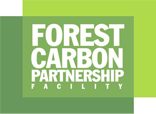
Summary Update 2023
Gender Action Plan 2019
Gender Action Plan 2019
Documento que resume las brechas de género relacionadas a REDD+ a nivel nacional, así como las acciones que se platean realizar en el marco de las políticas de la Estrategia Nacional REDD+
Published:
Submitted:
Forest Carbon Partnership Facility (FCPF)
Forest Carbon Partnership Facility (FCPF)
The Forest Carbon Partnership Facility (FCPF), which became operational in June 2008, is a global partnership focused on reducing emissions from deforestation and forest degradation, forest carbon stock conservation, sustainable management of forests and enhancement of forest carbon stocks (REDD+). The FCPF complements the UNFCCC negotiations on REDD+ by demonstrating how REDD+ can be applied at the country level and by learning lessons from this early implementation phase.
The FCPF has created a framework and processes for REDD+ readiness, which helps countries get ready for future systems of financial incentives for REDD+. Using this framework, each participating country develops an understanding of what it means to become ready for REDD+, in particular by developing reference scenarios, adopting a REDD+ strategy, designing monitoring systems and setting up REDD+ national management arrangements, in ways that are inclusive of the key national stakeholders.
Published:
Submitted:
Forest Carbon Partnership Facility (FCPF)
Forest Carbon Partnership Facility (FCPF)
The Forest Carbon Partnership Facility (FCPF), which became operational in June 2008, is a global partnership focused on reducing emissions from deforestation and forest degradation, forest carbon stock conservation, sustainable management of forests and enhancement of forest carbon stocks (REDD+). The FCPF complements the UNFCCC negotiations on REDD+ by demonstrating how REDD+ can be applied at the country level and by learning lessons from this early implementation phase.
The FCPF has created a framework and processes for REDD+ readiness, which helps countries get ready for future systems of financial incentives for REDD+. Using this framework, each participating country develops an understanding of what it means to become ready for REDD+, in particular by developing reference scenarios, adopting a REDD+ strategy, designing monitoring systems and setting up REDD+ national management arrangements, in ways that are inclusive of the key national stakeholders.
Published:
Submitted:
Forest Carbon Partnership Facility (FCPF)
Forest Carbon Partnership Facility (FCPF)
The Forest Carbon Partnership Facility (FCPF), which became operational in June 2008, is a global partnership focused on reducing emissions from deforestation and forest degradation, forest carbon stock conservation, sustainable management of forests and enhancement of forest carbon stocks (REDD+). The FCPF complements the UNFCCC negotiations on REDD+ by demonstrating how REDD+ can be applied at the country level and by learning lessons from this early implementation phase.
The FCPF has created a framework and processes for REDD+ readiness, which helps countries get ready for future systems of financial incentives for REDD+. Using this framework, each participating country develops an understanding of what it means to become ready for REDD+, in particular by developing reference scenarios, adopting a REDD+ strategy, designing monitoring systems and setting up REDD+ national management arrangements, in ways that are inclusive of the key national stakeholders.
Published:
Submitted:
